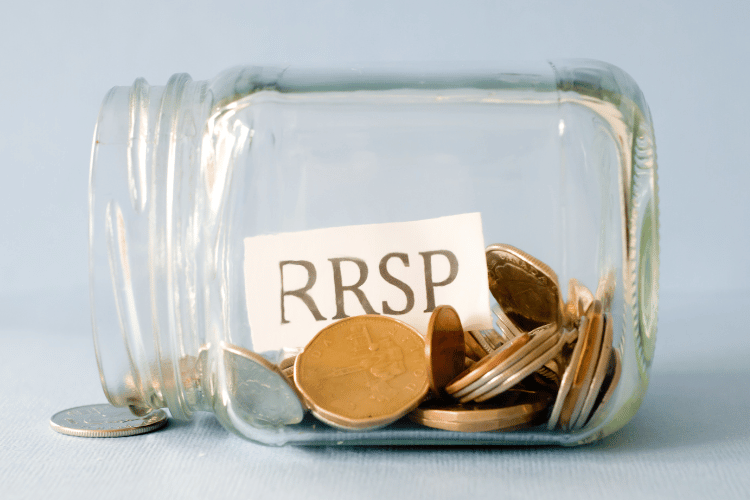While the acronyms sound similar, the RRSP and RDSP are designed for entirely different purposes.
In this in-depth RRSP vs. RDSP comparison, we will cover eligibility, age restrictions, tax benefits, and more.
RRSP vs. RDSP: At a Glance
Here’s a quick overview of the main differences between the two plans:
| RRSP | RDSP | |
| DTC Eligibility Required | No | Yes |
| Contribution Age Limit | 71 | 60 |
| Private Contributions | Tax-deductible | Not tax-deductible |
| Withdrawals | Fully taxable | Partly taxable |
| Canada Disability Savings Grant | No | Yes |
RRSP vs. RDSP: Overview
RRSP stands for Registered Retirement Savings Plan, while RSDP refers to the Registered Disability Savings Plan.
Let’s take a closer look at what each plan is all about.
What Is an RRSP?

The RRSP (not the same as a TFSA) is a retirement savings vehicle designed to help Canadians save for life after work.
The investment income generated within an RRSP account is tax-deferred. This means that the money in your RRSP grows tax-free through investments until you start making withdrawals in retirement.
Your RRSP can be one of a few types, including:
- Individual RRSP
- Spousal RRSP
- Group RRSP
What Is an RDSP?
The RDSP is a savings plan intended to help Canadians with disabilities and their families save for long-term financial security.
Like the RRSP, it’s a registered plan with the government that allows tax-deferred growth. Additionally, the RDSP also provides government grants and bonds to supplement contributions.
The amount that the government will put into the plan (as a matching grant) depends on the family income bracket, though. It could range between 300% and 100%.
Key Differences Between the RRSP and RDSP
While both plans offer tax-advantaged savings, there are a few differences to keep in mind.
Who Can Open these Savings Plan?
RRSP
You can set up and contribute to an RRSP at any age, as long as you are a resident of Canada and have earned income to contribute.
Some institutions require you to be the age of majority to open an account. You can continue contributing to your RRSP until the end of the year you turn 71.
RDSP
To be eligible for an RDSP, the beneficiary must qualify for Disability Tax Credit (DTC). Of course, the parents can open it on their disabled child’s behalf.
However, to qualify for DTC, a medical practitioner must certify on Form T2201 that the beneficiary has a serious long-term impairment in their physical or mental functions.
Aside from the DTC, the beneficiary must also be a Canadian resident under the age of 60 and have a Social Insurance Number.
Note that only one RDSP can be opened per eligible beneficiary. Yet, the RDSP can have multiple plan holders. Legal parents and family members can contribute to the plan as long as they have written permission.
What’s the Tax Treatment on Contributions and Withdrawals?

RRSP
All amounts deposited into an RRSP are deducted from your taxable income for the year of contribution, up to your allowable deduction limit.
You only pay tax on your savings when you eventually make withdrawals. This typically occurs when you retire and convert to a Registered Retirement Income Fund (RRIF).
Your income in retirement may be lower, though. This means that you’ll likely pay less tax on the withdrawals than you would have done if they weren’t deductible contributions. So, opening an RRSP can be great for tax savings during your high-income years.
It’s also possible to withdraw RRSP funds before retirement, but you’ll need to add the full amount to your taxable income for the year.
RDSP
The private contributions (by you, parents, etc.) to the RDSP are not subject to tax deductions.
Meanwhile, the government grant and bond amounts contributed to the RDSP, along with account earnings, are considered taxable income and subject to tax upon withdrawal.
Note that the payment types that could be made from a disabled person’s RDSP are:
- Disability Assistance Payments (DAPs) or Lifetime Disability Assistance Payments (LDAPs)
- Direct transfers to another RDSP
- Canada Disability Savings Act (CDSA) repayments
Are There Annual Limits?
RRSP
The annual RRSP deduction limit determines the maximum contribution amount to your own or your spouse’s RRSP that you can deduct from your tax for the year.
It’s a little tricky to calculate, though.
The general rule is that it’s 18% of your earned income, but it’s also based on the annual ceiling, which was $29,210 for 2022. Keep in mind that any unused RRSP deduction room from the previous year will roll over to the next.
Generally speaking, if you contribute beyond the net limit, all excess contributions above $2,000 will be taxed at 1% per month. But there are exceptions.

RDSP
The RDSP does not have an annual contribution limit.
However, there is a lifetime contribution limit of $200,000 per disabled beneficiary. All contributions and rollovers to the RDSP count towards this limit.
That said, direct transfers between RDSPs don’t affect the lifetime limit.
What Happens After Death?
RRSP
The savings for retirement in an RRSP get rolled into and become part of the deceased individual’s estate.
Up to $200,000 of the deceased’s RRSP proceeds can be transferred tax-free to the RDSP of a financially dependent child, provided there is enough remaining RDSP contribution room.
This allows the tax-deferred savings to continue benefiting the next generation.
RDSP
If an RDSP beneficiary dies, the plan must be closed by December 31st of the following year. One drawback here is that any government grants or bonds paid into the RDSP over the last 10 years have to be repaid.
After repayment, any remaining RDSP funds will be paid out to the deceased person’s estate.
Final Thoughts
Whether you go for the RRSP or RDSP, being aware of the unique rules and benefits is the first step.
Get in touch today to learn more about the different Canadian registered savings plans.
